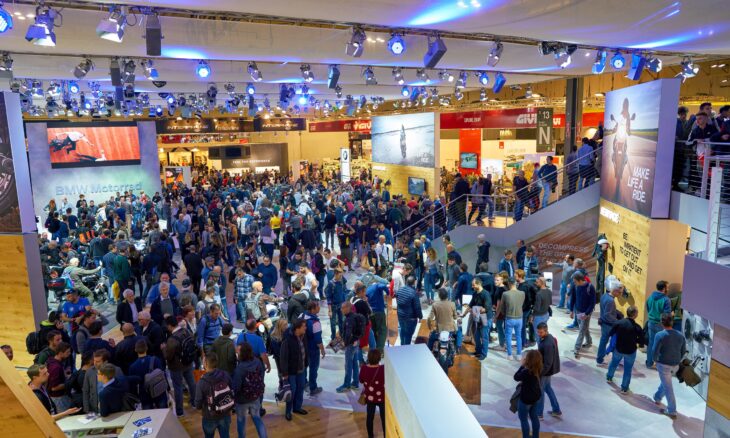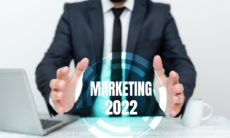Events have been an essential part of the B2B marketing mix forever, and they are always evolving, adjusting to market forces. The pandemic was not the only recent driver for change. Buying behavior changes. New tools and techniques emerge. Organizer creativity blossoms.
As organizers return to in-person, they are finding new ways to attract and engage attendees. Here are some trends and techniques I’ve observed recently that I know you will find inspiring as you plan your event marketing strategy for 2023.
Co-creation
It’s the organizer’s job to make decisions about event content and logistics, right? But how about inviting your attendees into the process? NGINX did just that for a prospecting event in Dubai in 2021.
NGINX operates in the relatively narrow field of secure app delivery. Their customers are highly technical dev-ops professionals, always looking for new solutions. With the help of their demand gen agency, The Social Effect, NGINX used paid media to gather signups in 200 target accounts, and then emailed a survey asking about their most pressing interests.
Having been asked for their interests, and then invited to an event that felt like it was customized for them, targets flocked to register. They were welcomed with individualized programs structured to suggest which sessions to attend, based on their needs. Once at the conference, they were encouraged to join in conversations with other attendees whose interests were similar.
Eben Meyer, managing director at The Social Effect, observes that buyers are looking for community. “Brand communications need to be more democratic, less about broadcast and more about dialogue. We wanted to give the prospect community a sense of ownership, and make them part of the conversation.” He credits Ingo, the social amplification tool for event organizers, with making this strategy easy to execute. He also reported remarkably low cost-per-lead results in the $23-25 range.
Recognize Changing Audience Needs
“Business people today value their time more than ever,” says Doug Binder, creative director at InVision Communications, and author of Gather: The Business of Coming Together. “The pandemic rewrote the rules. Attendees today think carefully about whether it’s worth their time to get on a plane and spend a few days at an event.”
In practical terms, this means that organizers must pay close attention to attendee preferences. For example, at a proprietary corporate event, forget the traditional expectation that all VPs will get a speaking slot. Instead, offer plenty of choices for how attendees use their time. And offer diverse choices. “Along with options for training, education and networking, we’ve been mixing in unusual choices like dance lessons, cooking classes, even a pop-up doggie petting park,” says Binder. “The key is to keep the options consistent with your company brand and culture. Make the goal of the event to learn, share, make friends and have fun.”
In fact, in his book, Binder offers a planning framework for modern events built on four pillars: Community, personal growth, celebration and pleasure. Sounds just right to me.
Inject Energy
Emerging from the pandemic, the Conference Board has produced four or five in-person events so far, according to Mary Beth Reidy, Senior Director, Conference Programming and Partnerships. “People are so happy to be back together, you can really feel it in the room,” she says. To build on that energy, she has experimented successfully with two interesting approaches.
First, they tried “cross-pollination” with a gamification app called Touchpoint, from the Certain event management platform. On the first morning, the conference chair would invite the audience to download the app, and take 15 minutes to chat with someone new, asking three simple questions, like “What do you want out the event today?” “What industry are you in?” and “How far did you travel to get here?” Then, the questioner would record the answers into the app, and the answers were shared later in the day with the audience via a word cloud.
This and other activities, like visiting a sponsor’s booth, or completing a session evaluation, generated badges, prizes and recognition at the end of the day. All great fun, and a nifty way to motivate behavior and engagement.
Second was a mindset change. Conference Board organizers are adding more weight to the entertainment side of the content. For example, taking a page from Fast Company’s playbook, they moved tried a departure from the word “conference.” When organizing the Women Lead Festival (which for the prior 19 years had been the Women Lead Conference) in September 2022, the program featured a series of short performances throughout the two days: A female a cappella group from Columbia University, a teenage violinist sponsored by the non-profit Harmony Program, and the 15-voice Resistance Revival Chorus. Wow.
“We found these approaches to be more memorable, and served to create an emotional response to the event,” said Reidy.
Clearly we marketers need to evolve our thinking about in-person B2B events. Let’s go for empathy, community, education and celebration.






This “temperature gauge” of B2B engagement is really helpful to augment our own individual experiences. Thank you, Ruth!
In particular, I am struck by the move towards celebration and “humanization”. This sounds like an appropriate and lasting trend, in response to the cocooning we all have experienced over the last few years.
It reminds me of the “evolution” of the hand-written letter. At one point, it was the ONLY way information got communicated. Then, as other communication became the norm, a hand-written letter became a distinctive, valued form of expression… even though it had not itself changed! It sounds like just “getting together” in a zoomified world is less compelling so the emotional temperature needs to be higher to get us to come out of our work/home bunkers.
Or as I like to misquote Michael Corleone, “It’s not just business. It’s personal.”